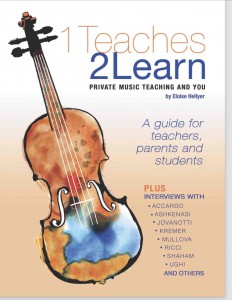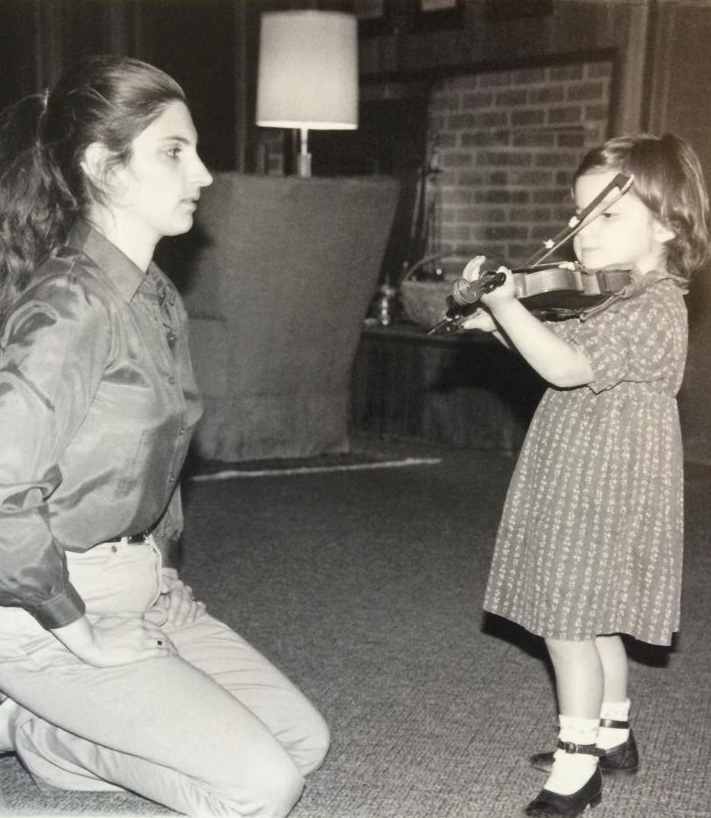Patience Traps, Part 3: Students, part a
“I HATE PRACTICING” An Extremely Famous Violinist*
At last we come to the real test of our ability to resist patience: our students.
There are myriad ways in which our students can push us into the patience trap. Perhaps the most dangerous is when they contract a disease known to most music teachers as I-Don’t-Want-To-Practice-itis.
A variation is: I-Don’t-Like-To-Practice-itis.
Either one leads to a chronic condition called: I-Don’t-Practice-Much-osis
Which leads to a necrotizing inability to play the instrument and……..need I go on?
What to do? There are various choices:
- Wait until they grow up and realize what they have missed (when it is often too late).
- After waiting in vain for them and their parents to come to their senses, you finally lose patience and tell them to quit.
- You give up entirely, thinking, “You can lead a horse to water…” but allow them to come to lessons anyway, hoping that something will change or they will decide to stop on their own.
- You realize that the student has a serious problem that must be faced, and you do something about it.
I am sure you have already realized that the fourth choice is really the only option, if you want your student to continue playing.
However, before we try to tackle the student’s problem, we should look at our own attitudes. Why do you want your students to practice? Here are a few common reasons:
- The parents are paying you to get results and you want to make them happy and also to feel you are earning your pay.
- It is much more interesting to give lessons to a student who practices instead of giving the same lesson over and over.
- Good students help your reputation.
- Because you say so, because you yourself did it and because it’s a good idea.
- If the student makes progress, he will be happy, continue to make more progress and everyone will be happy.
Most of the above reasons, you will note, are centered around YOUR comfort and YOUR ambitions. They probably do not even percolate into our conscious minds until we are giving lessons to a non-practicer. Therefore, to help our students and to avoid doing damage, we first should examine our own motivations. So, point by point:
- Yes, the parents are paying you, but your responsibility is to the student. Your idea of “results” is not necessarily the same as the parents’ or the student’s. Besides, you are REALLY earning your pay by helping difficult students, so you don’t need worry about this.
- Yes it is much more interesting to teach good students, but who is paying you to enjoy yourself? Teaching is also fun, but, like practicing (see quote above), it can have its difficult moments. Deal with them. If you can handle bad practicing moments, you can handle bad teaching moments. Part of job satisfaction is overcoming difficulties, not sweeping them away or getting rid of them when you get annoyed or bored.
- Bad students will also make a good reputation for you if you handle them right. Since when is teaching about you, anyway?
- Yes, practicing IS a good idea. You know that from your own experience but the days are past of the teacher with an iron-clad fist and boots to match.
- This is the most convincing argument – that a student is happier if he achieves something. If this is why you want your students to practice, there is hope for both you and your students. Why? Because you are thinking about your student and not yourself.
So, before you make a decision on what to do about the non-practicing problem, try this:
Step back, take yourself out of the equation. Do not think about how you feel. Think about the student (and his parents) and what they want to get out of your lessons. If you do this, you will be able to see the whole situation much more clearly and then be able to focus on how to help your student face his problem with practicing instead of only concentrating on YOUR problem with his problem.
Next: some ideas on why students don’t practice and how to get them to.
- Viktoria Mullova, from an interview she very graciously gave me many years ago for a forthcoming book. She said a lot more of great value which I will publish in the future. My apologies to her for only publishing this little excerpt at the moment but you have to admit that it got your attention!
Share this:
Buy it on www.sharmusic.com - eBook format, avaliable worldwide, paperback in North America
COPYRIGHT
ABOUT
A music teacher’s thoughts and observations on the teaching and the study of a musical instrument, hoping to be of help to parents, students and teachers.
PHOTO
AWARDED TOP 25 VIOLIN BLOG
CATEGORIES
TAGS
ARCHIVES
-
Agosto 2022
Agosto 2023
Agosto 2024
April 2015
April 2016
April 2017
April 2019
April 2020
Aprile 2022
Aprile 2023
Aprile 2024
August 2014
August 2015
August 2016
August 2017
August 2018
August 2019
August 2021
December 2014
December 2015
December 2016
December 2017
December 2018
December 2019
December 2020
Dicembre 2022
Dicembre 2023
Dicembre 2024
Febbraio 2022
Febbraio 2023
Febbraio 2024
February 2015
February 2016
February 2018
February 2019
February 2020
February 2021
Gennaio 2022
Gennaio 2023
Gennaio 2024
Giugno 2022
Giugno 2022
Giugno 2023
Giugno 2024
January 2015
January 2016
January 2017
January 2018
January 2019
January 2020
July 2015
July 2017
July 2019
June 2016
June 2017
June 2018
June 2019
June 2020
June 2021
Luglio 2022
Luglio 2023
Luglio 2024
Maggio 2022
Maggio 2023
Maggio 2024
March 2015
March 2016
March 2017
March 2018
March 2019
March 2020
March 2021
Marzo 2022
Marzo 2023
Marzo 2024
May 2015
May 2016
May 2018
May 2019
May 2020
November 2014
November 2015
November 2016
November 2017
November 2018
November 2019
November 2021
Novembre 2022
Novembre 2023
Novembre 2024
October 2014
October 2015
October 2017
October 2018
October 2019
October 2020
October 2021
Ottobre 2022
Ottobre 2023
Ottobre 2024
September 2014
September 2015
September 2016
September 2018
September 2019
September 2020
September 2021
Settembre 2022
Settembre 2023
Settembre 2024
RECENT POSTS
Terry G and Me, or Terry Gilliam on Where (or What) Practicing the Piano Will Get You…
The Teaching We Don’t Do Is More Important Than We Think
Overwhelmingness or What Teaching and Motherhood* Have in Common
Cellphone Serenity
How to Build Your Reputation – the Kind You Want
Desperate Times, Desperate Measures. Or How to Deal With Your Strong-Willed Stubborn Student and Survive
“Why Does My Teacher Get So Frustrated?” Letter to a Perplexed Student
Mount Rush-no-more….And How to Get There
Realizzato con VelociBuilder - Another Project By: Marketing:Start! - Privacy Policy




